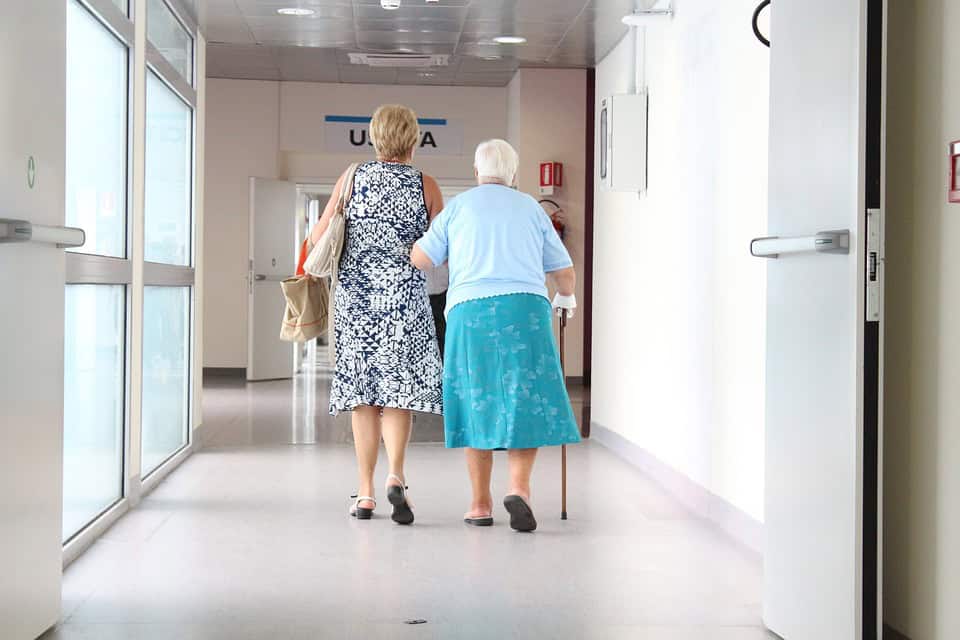By Sangita Verma, PT, DPT, MBA, GCS
A sudden misstep can happen to anyone, but older adults as well as individuals with chronic health conditions such as diabetes or high blood pressure, or those taking certain medication such as sedatives, are at greater risk for falls.
What’s more, a single unexpected tumble can result in serious injury, including hip fracture, that can change your life.
That’s why preventing falls is so important.
Penn Medicine Princeton Medical Center Princeton Rehabilitation offers comprehensive, individualized physical therapy services to help prevent falls and to help you recover if you have experienced a fall.
Falls Cause Majority of Hip Fractures
Each year, more than 300,000 older adults — those age 65 and above — are hospitalized for hip fractures. The vast majority of these fractures are caused by falling, according to the Centers for Disease Control and Prevention (CDC).
Consequently, hip fractures are one of the most serious fall injuries as they are difficult to recover from and afterward many people are not able to live on their own.
In fact, studies show that hip fractures are associated with increased mortality for older adults, in part because older adults are more likely to have other health complications, making them slower to recover from injuries than others.
Women Especially at Risk
More than one in four people aged 65 and older experience a fall each year, according to the CDC, and the risk increases with age.
According to the CDC, women are especially at risk because they tend to fall more often than men. Women are also more prone to osteoporosis, a disease that weakens bones and makes them more susceptible to fracture.
Other fall risk factors include:
- Lower body weakness.
- Vitamin D deficiency.
- Difficulties with walking and balance.
- Use of medicines, such as tranquilizers, sedatives, or antidepressants.
- Vision problems.
- Foot pain or poor footwear.
- Home hazards or dangers such as broken or uneven steps, throw rugs or clutter that can be tripped over.
Most falls are caused by a combination of risk factors, according to the CDC. The more risk factors a person has, the greater their chances of falling.
Reduce Risk with Physical Therapy
If you are concerned about your risk for falling or have already experienced a fall, talk to your doctor. They may prescribe physical therapy to help reduce your risk, or you may wish to seek physical therapy directly.
Physical therapists can help people reduce their risk of falling by developing an individualized exercise program that builds strength and improves balance.
In addition, physical therapists can teach you how to use assistive devices, such as canes and walkers, to help you get around safely.
Therapists often perform a home safety inspection as well to identify and address fall hazards. Physical therapy is also important when recovering after a fall. In many cases, people fear falling again, which can limit their activity. Working with a therapist to regain strength and mobility can also help you regain your confidence and quality of life.
Prevent Falls, Fractures Before They Happen
In addition to getting a medical evaluation and seeking physical therapy, there are several other steps you can take to help prevent falls and fractures before they happen.
- Move chairs, coffee tables, and other furniture, which can be tripping hazards, out of
pathways. - Secure or remove loose area rugs.
- Remove clutter, such as magazines, newspapers, and other items, from the floor.
- Wear proper footwear. Avoid heels, floppy slippers or shoes, and stocking feet.
- Relocate electrical cords away from chairs and high foot traffic areas.
- Improve lighting in bedrooms, hallways, and bathrooms. Use a night light for added
safety. - Install handrails in bathrooms (adjacent to showers, tubs and toilets) and on both sides of staircases.
- Get your vision checked and make sure your glasses are clean.
- Stay active. Do exercises that strengthen your muscles and improve your balance, such as Tai chi.
- Get screened for osteoporosis and get treated if necessary. Ask your doctor if you should be taking vitamin D supplements.
- Tell your doctor if you have fallen since your last appointment. Discuss any medications you take (prescription and over the counter), as well as any recent changes in your health.
Falls are not a normal part of aging, and they can be prevented. Talk with your doctor about physical therapy and other steps you can take to reduce your risk and stay on your feet as you get older.
For more information about Princeton Medical Center Princeton Rehabilitation or to find a physical therapist with Princeton Rehabilitation, call 609.853.7840 or visit www.princetonhcs.org.
Sangita Verma, PT, DPT, MBA, GCS, holds a doctorate degree in physical therapy. She is a geriatric certified specialist and is the director of rehabilitation for Princeton Rehabilitation.

